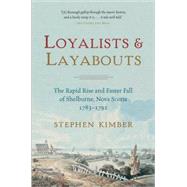
| Dramatis Personae | p. xi |
| Introduction | p. 1 |
| Prologue, "An Ornament to the British Empire" | p. 7 |
| "Emanations of the Leaden George" | p. 15 |
| "Oh God, It's all Over" | p. 45 |
| "The Consequence...Time only will Reveal" | p. 87 |
| "This Cursed Republican Town Meeting Spirit" | p. 115 |
| "Great Riot Today" | p. 167 |
| "A Pitiable Passion" | p. 195 |
| "The Spite of Misfortune" | p. 229 |
| "Cannot do Worse, Massa" | p. 261 |
| Afterword | p. 293 |
| Whatever happened to | p. 297 |
| Acknowledgements | p. 303 |
| Endnotes | p. 305 |
| Bibliography | p. 317 |
| Index | p. 323 |
| Table of Contents provided by Ingram. All Rights Reserved. |
The New copy of this book will include any supplemental materials advertised. Please check the title of the book to determine if it should include any access cards, study guides, lab manuals, CDs, etc.
The Used, Rental and eBook copies of this book are not guaranteed to include any supplemental materials. Typically, only the book itself is included. This is true even if the title states it includes any access cards, study guides, lab manuals, CDs, etc.
Excerpted from Loyalists and Layabouts: The Rapid Rise and Faster Fall of Shelburne, Nova Scotia, 1783-1792 by Stephen Kimber
All rights reserved by the original copyright owners. Excerpts are provided for display purposes only and may not be reproduced, reprinted or distributed without the written permission of the publisher.